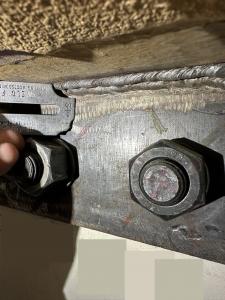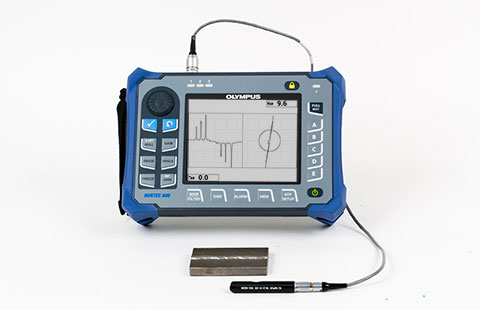Why You Required Specialist Welding Inspection Racine for Your Jobs
Why You Required Specialist Welding Inspection Racine for Your Jobs
Blog Article
Ingenious Methods to Fillet Weld Evaluation and Testing: Enhancing Weld High Quality and Compliance Specifications
In the world of welding, the quality and integrity of fillet welds play a vital role in guaranteeing the structural soundness and integrity of different commercial elements. With the consistent drive for boosted efficiency and compliance with stringent standards, the expedition of cutting-edge approaches to fillet weld evaluation and screening has become essential. As markets evolve, the typical methods might no longer be enough in fulfilling the needs of modern-day welding applications. By embracing advanced innovations and methodologies, a new horizon of opportunities emerges in the world of weld top quality evaluation and adherence to conformity requirements.
Advanced Non-Destructive Screening Techniques
Using advanced innovations, advanced non-destructive screening methods play a vital duty in ensuring the stability and high quality of fillet welds. These approaches, such as phased array ultrasonic testing (PAUT) and magnetic bit testing (MPT), deal in-depth understandings into the weld's interior structure without causing any type of damages to the material. PAUT, as an example, makes use of numerous ultrasonic elements to examine the weld from various angles, providing an extensive visualization of potential flaws like lack of combination or splits.
Likewise, MPT is effective in identifying surface-breaking flaws by applying an electromagnetic field and iron fragments to the weld location. This approach is particularly useful for identifying gaps that may jeopardize the weld's toughness. By utilizing these innovative non-destructive testing techniques, weld assessors can properly analyze the top quality of fillet welds, making sure conformity with industry requirements and laws. The ability to detect defects early on not only improves weld high quality but likewise stops expensive rework or failings in structural stability, underscoring the importance of these ingenious testing approaches in welding evaluations.
Robotics and Automation in Examination
The assimilation of robotics and automation has actually revolutionized the examination process for fillet welds, enhancing efficiency and precision in high quality analysis. Robotics supply specific control and repeatability in examining welds, ensuring dependable and constant results. Automated systems can be programmed to adhere to details inspection courses, guaranteeing comprehensive coverage of welds and minimizing the risk of human mistake.
Robotic assessment systems geared up with advanced sensing units can detect and determine weld features with high precision, supplying thorough data for evaluation. These systems can identify defects such as cracks, absence of fusion, and porosity, allowing punctual rehabilitative activities to be taken. Furthermore, robotics and automation permit real-time information collection and analysis, supplying instant comments to operators and promoting fast decision-making procedures.
In addition, making use of robotics and automation in fillet weld examination boosts total productivity by decreasing inspection times and increasing inspection throughput. By improving the evaluation procedure, manufacturers can guarantee weld quality and compliance criteria are met effectively, ultimately bring about cost savings and improved item high quality.
Making Use Of Expert System for Evaluation
Fabricated knowledge plays a click resources pivotal function in improving the efficiency and precision of analysis in fillet weld examination procedures. AI formulas can swiftly refine large amounts of information from weld evaluations, identifying problems or disparities that may be testing to identify with the naked eye - Welding Inspection Racine.
Furthermore, AI systems can pick up from past examination data, constantly improving their capacity to identify potential problems and discrepancies in fillet welds. This adaptive knowing capacity improves the general high quality control process, decreasing the probability of human error and making certain that welds fulfill the called for standards. By incorporating synthetic intelligence into fillet weld analysis, industries can attain greater levels of effectiveness, consistency, and conformity in their assessment techniques.
Portable Devices for On-Site Examination
 Enhancing field inspection effectiveness, the fostering of mobile tools changes on-site assessment procedures for fillet welds. These tools use flexibility and comfort, permitting inspectors to perform thorough exams in numerous areas, including remote or challenging atmospheres. Portable devices such as ultrasonic testing gadgets, magnetic fragment evaluation devices, and electronic radiography systems supply real-time information and high-resolution imaging capacities, making it possible for fast decision-making and immediate responses on weld high quality.
Enhancing field inspection effectiveness, the fostering of mobile tools changes on-site assessment procedures for fillet welds. These tools use flexibility and comfort, permitting inspectors to perform thorough exams in numerous areas, including remote or challenging atmospheres. Portable devices such as ultrasonic testing gadgets, magnetic fragment evaluation devices, and electronic radiography systems supply real-time information and high-resolution imaging capacities, making it possible for fast decision-making and immediate responses on weld high quality.One considerable benefit of portable devices is their capacity to streamline examination procedures, minimizing downtime and enhancing overall productivity. Examiners can quickly move these tools to different job sites, getting rid of the need for transferring heavy machinery or parts to off-site facilities. In addition, the portability of these tools advertises cost-effectiveness by reducing transport expenses and accelerating inspection timelines.
In addition, making use of portable tools for on-site assessment advertises aggressive quality assurance procedures, as assessors can promptly determine and address any type of potential welding flaws or discrepancies. By including these cutting-edge modern technologies into on-site assessment techniques, welding specialists can make sure conformity with industry requirements and improve weld high quality, inevitably resulting in boosted architectural integrity and safety and security in numerous welding applications.
Integration of Data Administration Equipment
Having optimized on-site evaluation procedures with the utilization of portable devices, the next stage includes the seamless integration of data monitoring systems to additionally Discover More Here improve efficiency and data analysis abilities in fillet weld examination and screening. Welding Inspection Racine. By incorporating information management systems into the inspection process, companies can improve data collection, storage space, and analysis. This integration enables real-time surveillance of weld high quality, instant identification of problems, and punctual decision-making to remedy any concerns that might occur throughout the assessment process
The assimilation of information administration systems enables seamless communication between different stakeholders entailed in the evaluation procedure, cultivating partnership and improving overall quality control actions. Inevitably, the assimilation of data administration systems offers to elevate the requirements of fillet weld assessment and screening, making certain compliance with sector guidelines and boosting weld quality.
Final Thought
To conclude, cutting-edge techniques to fillet weld inspection and testing have actually substantially improved weld top quality and compliance criteria. Advanced non-destructive screening methods, robotics, automation, expert system, portable devices, and data administration systems have revolutionized the means weld examinations are conducted. By using these modern technologies, industries can make certain that welds meet the needed quality standards and regulations, eventually improving overall effectiveness and safety in welding procedures.

By using these sophisticated non-destructive screening methods, weld assessors can precisely examine the quality of fillet welds, ensuring conformity with sector requirements and policies. Mobile tools such as ultrasonic screening devices, magnetic particle inspection tools, and electronic radiography systems provide real-time information and high-resolution imaging capacities, making it possible for quick decision-making and immediate responses on weld quality.
Having actually enhanced on-site assessment processes with the use of portable devices, the following stage involves the smooth assimilation of data monitoring systems to further boost efficiency and information evaluation abilities in fillet weld examination and screening (Welding Inspection Racine). Ultimately, the combination of information administration systems serves to raise the criteria of fillet weld inspection and testing, making sure conformity with market laws and boosting weld high quality
 In conclusion, ingenious methods to fillet weld website here evaluation and screening have actually dramatically enhanced weld high quality and conformity requirements.
In conclusion, ingenious methods to fillet weld website here evaluation and screening have actually dramatically enhanced weld high quality and conformity requirements.Report this page